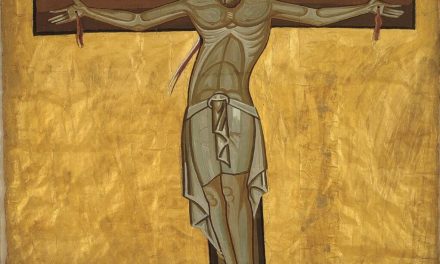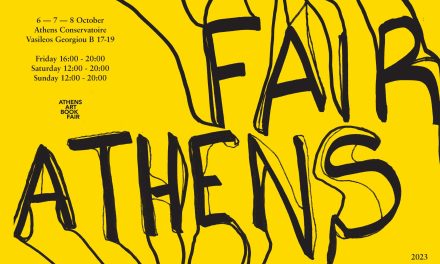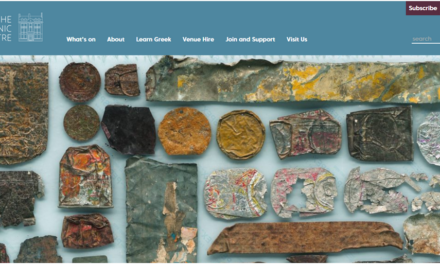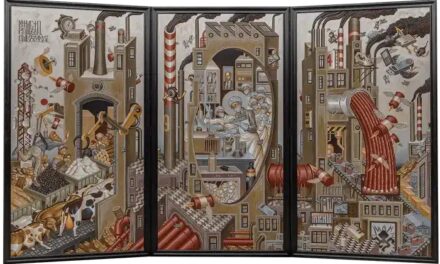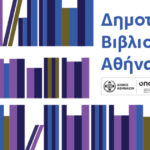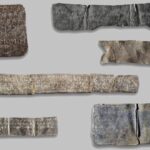Iannis Xenakis was a Greek-French architect, mathematician and one of the 20th century’s most influential European composers. He applied his studies and research in mathematics, statistics, physics, architecture and philosophy into his compositional works, originating stochastic music. The Greek National Opera’s Alternative Stage pays tribute to this seminal figure of experimental music, presenting the Greek premiere of his work The Bacchae in the form of a theatric play.
Xenakis was born in 1922 in Brăila, Romania, to wealthy Greek parents. After losing his mother at a young age, he grew up under the care of governesses and, at ten, was sent to a boarding school on the island of Spetses, Greece, where he also received a musical education. One day, in the assembly room, he heard Beethoven’s Fifth Symphony playing on the radio and, in his own words, it “which struck [him] like an apocalypse”, marking the beginning of his passion with music. After graduation, he moved to Athens and entered the National Technical University of Athens, to study architecture and engineering. His studies were repeatedly disrupted by the Greco-Italian War of 1940 and the ensuing dramatic events; he managed however to obtain a degree in civil engineering in 1947.
Xenakis joined the National Liberation Front early during the war, and became part of the armed resistance during the Nazi occupation. As a member of the student battalion of the Greek People’s Liberation Army (ELAS), he took part in the extensive conflicts that broke up after the British forces and the Greek government ordered the unilateral disarmament of ELAS (Dekemvriana); a shrapnelwound from a tank blast left him disfigured and blind in the left eye. In 1946, the Greek Civil War broke out; in 1947, communists were largely persecuted and sent to prison islands. Fearing for his fate, Xenakis fled to Italy and then France.
Once in Paris, Xenakis was able to get a job at the studio the iconic modernist architect Le Corbusier; an engineering assistant at first, he eventually collaborated with him personally on important commissions. In tandem, he studied harmony and counterpoint and he composed, seeking guidance from a number of established musicians, only to be rejected or disappointed, until his meeting with major avant-garde composer Olivier Messiaen, who saw in him outstanding intelligence, and encouraged him to use his Greek heritage and his knowledge of mathematics and architecture in his music.
In 1953, he married French novelist Françoise Xenakis (née Gargouïl), and in 1956 they had a daughter. Studying under Messiaen, and also familiarising himself with the techniques of serialism and musique concrète, Xenakis gradually developed his own, very personal style. He continued his work with Le Corbusier, with his musical creations inspiring as well as being inspired by his architectural projects. Such was the case of the Philips Pavilion, a structure (designed almost entirely by Xenakis for Expo ’58) formed as a cluster of hyperbolic paraboloids in which music was spatialised by sound projectionists. The basis for its design was also used as the preliminary sketch for Metastaseis, considered his first major musical work.
By the late 50’s, Xenakis had started gaining widespread recognition, receiving awards and official musical commissions. In 1959, he left the architectural studio to concentrate on music, quickly becoming one of the most important European composers of his time. He became especially known for his musical research in the field of computer-assisted composition, founding the institute “Equipe de Mathématique et Automatique Musicales” in 1966. As a renowned artist, he also became a music professor, teaching and giving lectures in various institutions, as well as publishing a number of articles and essays on music. In 1999, he was awarded the Polar Music Prize in recognition of the entirety of his work. In 2001, Xenakis died after a long battle with chronic illness.
In his musical works, as well as his architectural projects, Xenakis applied mathematical constructs, such as using the theory of sets, symbolic logic, and probabilistic calculus – concepts which he also analysed in his written essays, especially the famous Formalized Music (1963). He was the one to introduce stochastic music, a technique for composing music with stochastic mathematical functions. He also devised a computer system called UPIC, which could translate graphical images into musical results. Xenakis’ unique approach to composition makes him an exceptional case, not easily accessible to vast audiences, yet deeply influencing those who appreciate his work’s power and unconventional beauty.
The Greek National Opera’s Alternative Stage, as part of its “Music Theatre Days” series, honours Iannis Xenakis, presenting the Greek premiere of his work The Bacchae (1993) in the form of a theatre play, under musical direction of Nicolas Vassiliou and the stage direction of Giannos Perlegas, with the participation of the Hellenic Broadcasting Corporation (ERT) Choir. The work, based on Euripides’ Bacchae, was commissioned by the Opera Factory in London, performed only once in 1993 and never recorded, probably due to the composer’s deteriorating health. Its performance is considered exceptionally demanding for both musicians and vocalists, making its staging a very challenging endeavour.
The official page on Iannis Xenakis life and work, constantly updated: http://www.iannis-xenakis.org/
The institute Centre Iannis Xenakis (currently hosted at the University of Rouen) is dedicated to the promotion of his works, especialy the UPIC system: http://www.centre-iannis-xenakis.org/
Read also via Greek News Agenda: Composer Minas Borboudakis on his work in 21st-century classical music; Conductor Markellos Chryssicos on Baroque music and its dialogue with the Greek tradition; Nikos Skalkottas: an overlooked musical genius
N.M. (Photo: Ulf Andersen)


